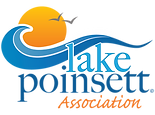CHALLENGES WE FACE

AIS AWARENESS
Aquatic invasive species (AIS) are plants, animals, or pathogens introduced by human action to an area where they do not naturally occur and are either causing harm or have the potential to cause harm.
Once they establish breeding populations, they spread rapidly in their new environments. AIS lack natural predators and competitors, which contribute to their population explosions.
Learn more about recognizing and preventing AIS from SDGF&P.
WHAT WE'RE DOING
We are working to raise awareness in addressing our lake's problems.
ZEBRA MUSSELS

Currently NOT in our lake.
Small, fingernail sized organisms that can attach to any hard surface in water. Adults are approximately 1/4 inch to 1 1/2 inches long, and feature D-shaped shells with alternating yellow and brownish stripes.
Native to Eastern Europe, zebra mussels were first introduced into the Great Lakes through ballast water that was drained from international cargo ships. As effective filter feeders, they can remove large levels of plankton and other small organisms, creating increased water clarity levels. However, increased water clarity is not always an indicator of a healthy ecosystem, and the increased clarity can cause increased aquatic plant growth, creating an imbalanced ecosystem.
The LPA is working with SD GF&P to promote awareness and prevention of AIS into our lakes.
CURLY-LEAF POND WEED

Currently NOT in our lake.
Often the first pondweed to appear in spring, Curly-Leaf Pondweed thrives in cold waters, such as those found throughout Wisconsin and other Midwestern states. Due to its preference for cold water, Curly-Leaf Pondweed begins growing while ice may still cover most lakes, gaining a head start over other native plants. This unique life-cycle allows it to outcompete native plants for resources, but it also means that it dies off earlier than most other species.
This creates a unique problem because the decomposition of Curly-Leaf Pondweed in late summer can decrease dissolved oxygen levels, destroying native fish populations. In addition it can create a sludgy mess that is a headache for boaters and lakefront home owners.
COMMON CARP

Carp are considered a pest fish. They destroy important vegetation, stir up the lake bottom, fuel algae growth, and muck up the water.
Carp have been the target of large eradication projects in several states that have only temporarily reduced populations. Once established in a water body, common carp is difficult and expensive to eliminate.
How did they get here? In the 1800's the U.S. Government introduced carp to many lakes seeing them as a cheap and easy food source. However, the carp population soon grew out of control since one female carp can lay one million eggs per year!
If you find dead carp on your shoreline, remove the carcasses, which can be put in a dumpster, composted or buried for disposal.
